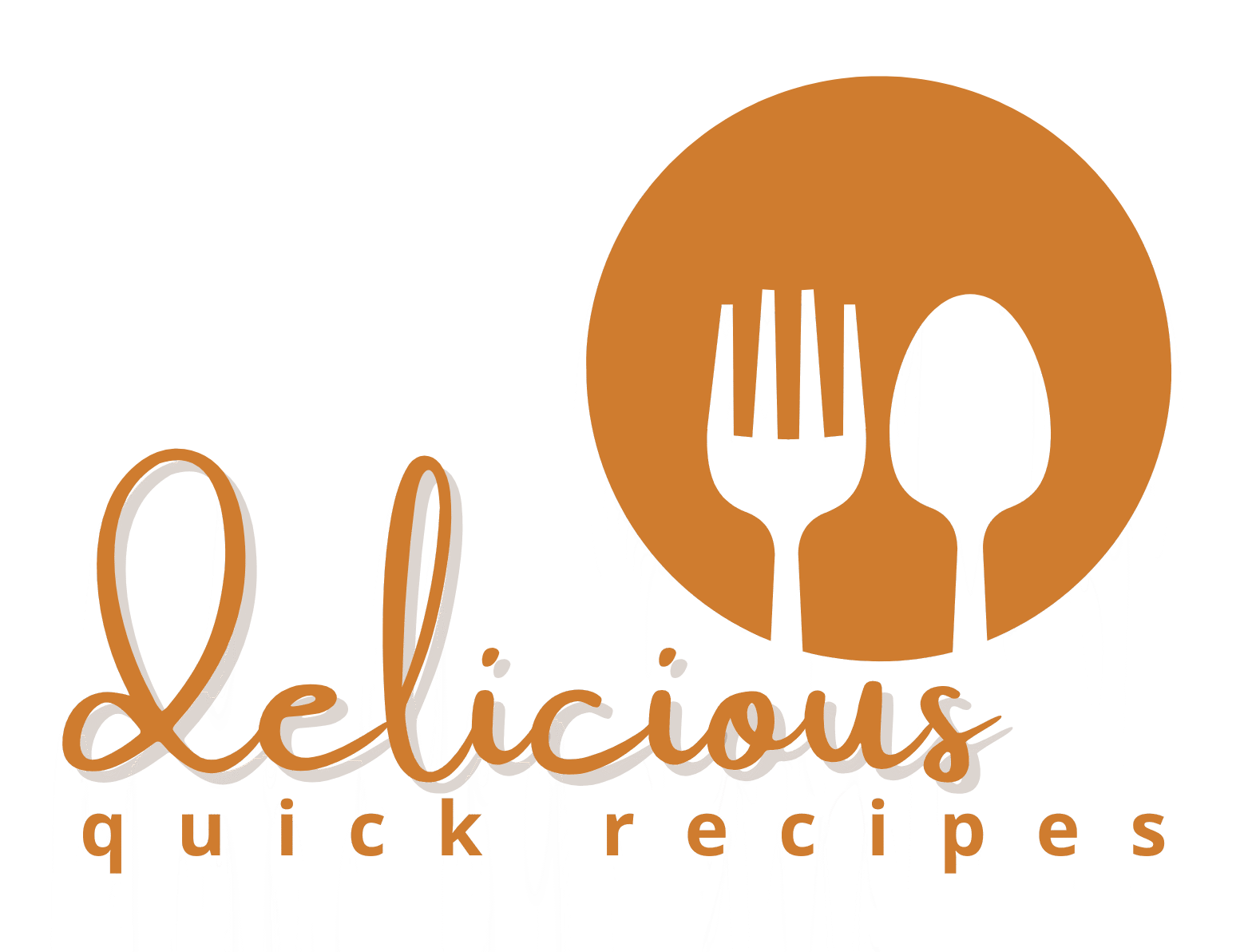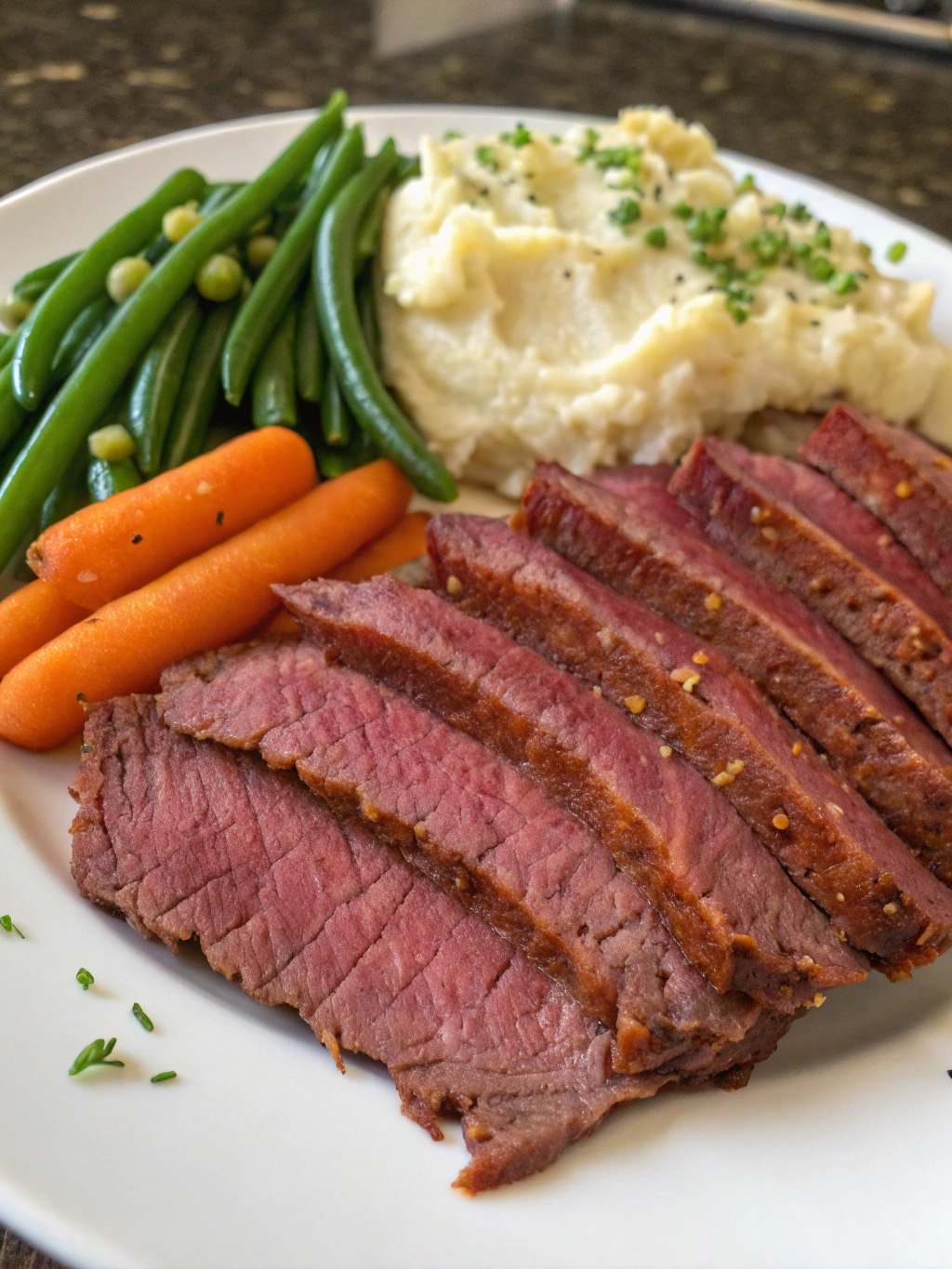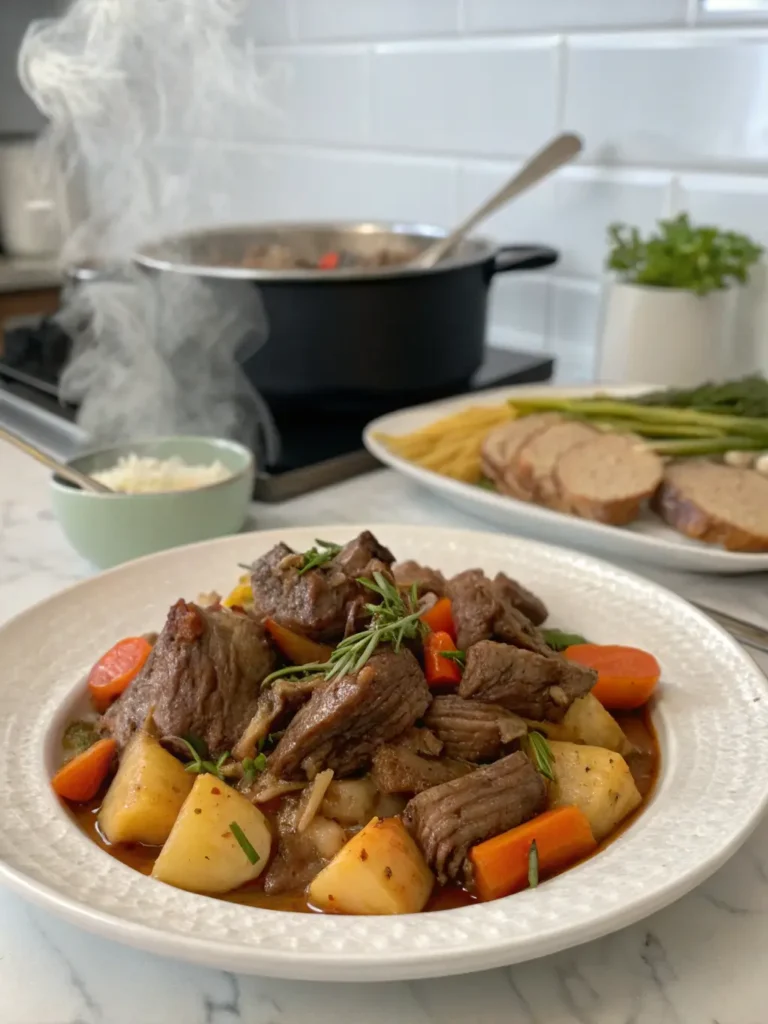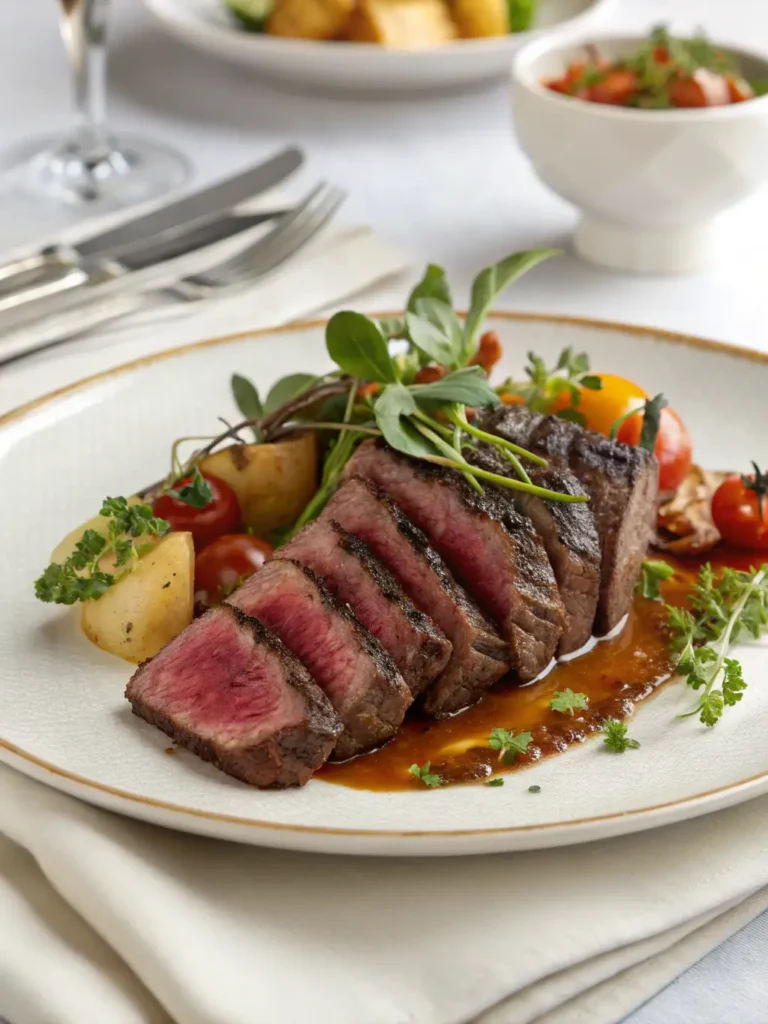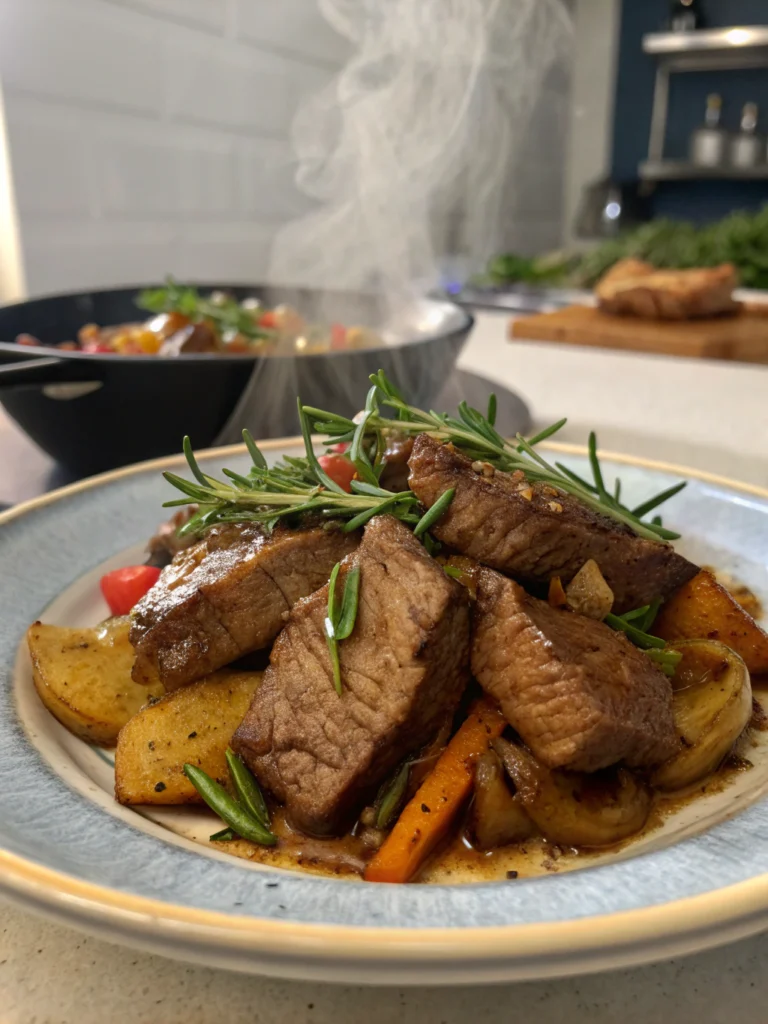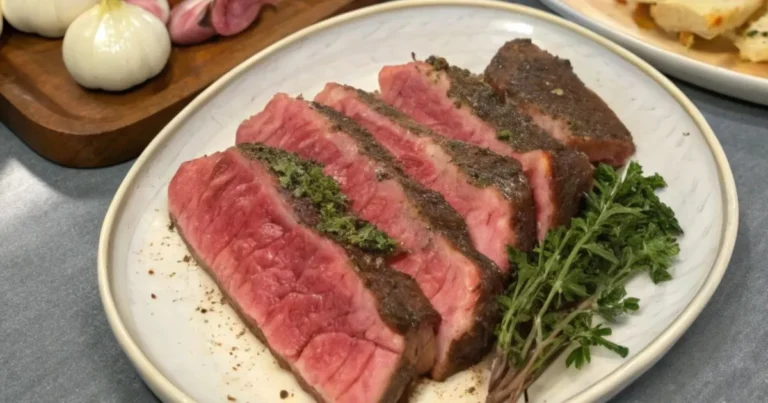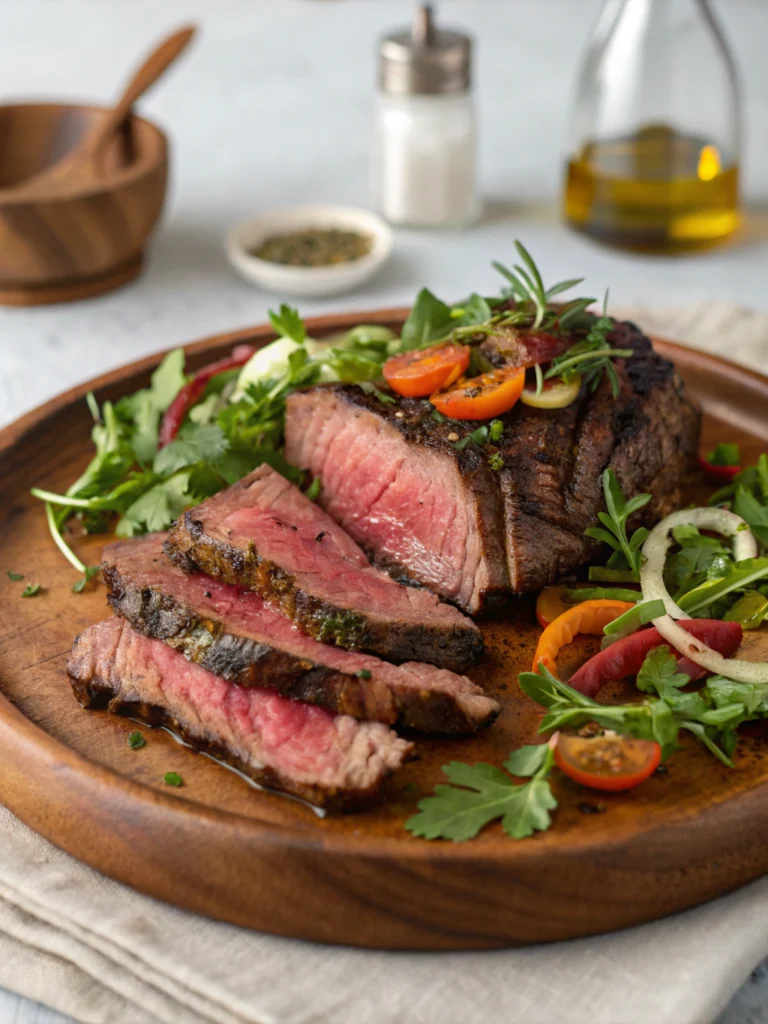What Is Corned Beef? You’ll Be Shocked by Its Origin and Secrets
Table of Contents
Introduction
Did you know that what is corned beef has nothing to do with corn as we know it today? Despite being a staple on St. Patrick’s Day tables across America, this curious culinary creation actually originated far from the shores of Ireland. In fact, 87% of Americans who consume corned beef believe it’s an authentic Irish dish, when historical evidence suggests a far more complex story. The term “corn” refers to large salt crystals used to cure the meat a preservation method dating back centuries. This misunderstood delicacy has traveled through time and across continents to become the flavorful, tender meat we enjoy today. Let’s uncover the fascinating journey behind this deceptively simple dish and discover why it continues to captivate our taste buds.
Ingredients List
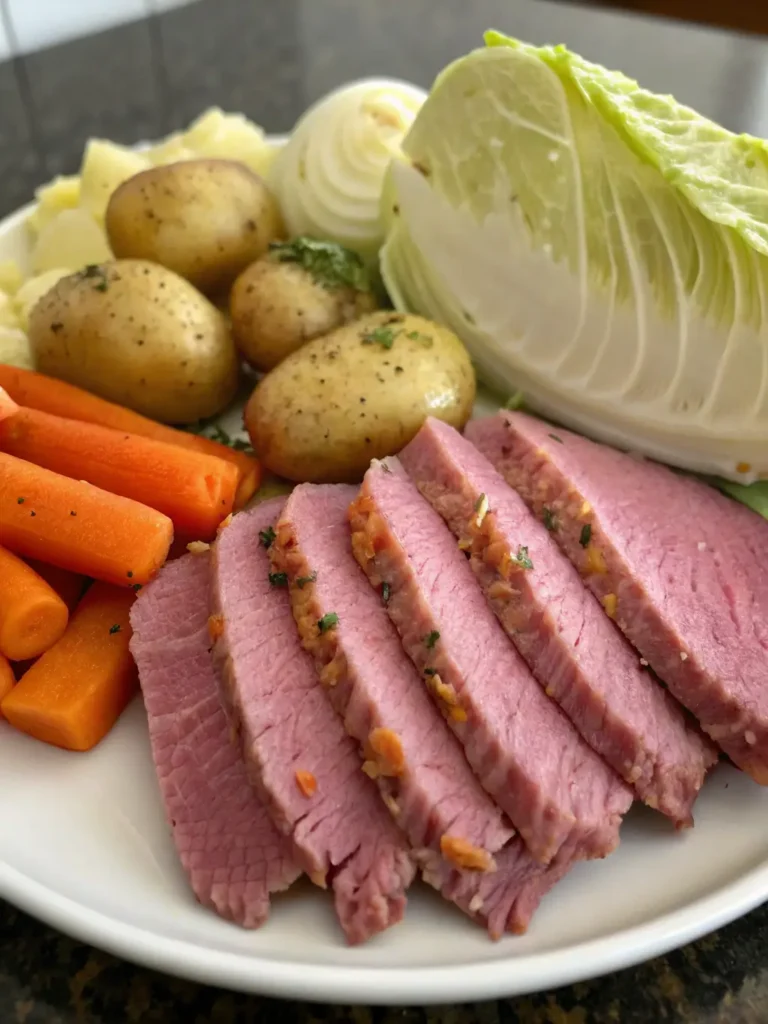
what is corned beef
For traditional corned beef, you’ll need:
- 4-5 pounds of beef brisket
- ¼ cup of pickling spice (including mustard seeds, coriander seeds, bay leaves, and allspice berries)
- ¼ cup of sea salt or kosher salt
- 2 tablespoons of pink curing salt (sodium nitrite)
- ½ cup of brown sugar
- 4 cloves of garlic, minced
- 1 tablespoon of black peppercorns
- 2 cups of water
Substitution options: If you can’t find pink curing salt, you can skip it, though the meat won’t have that distinctive rosy color. Brown sugar can be replaced with honey for a different flavor profile, and you can adjust the spice mixture based on your preference for more or less heat.
Timing
Preparing authentic corned beef requires patience, but the results are worth it. The curing process takes approximately 5-7 days, which might seem long but is actually 30% faster than historical methods that could take weeks. The actual cooking time is about 3 hours (50 minutes per pound), and the total active preparation time is just 30 minutes. While this isn’t a quick weeknight meal, the hands-on time is minimal, making it perfect for weekend cooking projects where the delicious aroma can fill your home all day.
Step-by-Step Instructions
Step 1: Prepare the Brine
In a large pot, combine the salt, pink curing salt, brown sugar, and spices with 2 cups of water. Bring to a simmer, stirring until the salt and sugar dissolve completely. Remove from heat and add 2 cups of ice to cool the mixture quickly. This rapid cooling prevents bacterial growth and ensures food safety.
Step 2: Prepare the Brisket
Trim excessive fat from the brisket, leaving about ¼ inch of fat for flavor. Place the brisket in a large container or resealable bag that can fit in your refrigerator. Pour the cooled brine over the meat, ensuring it’s completely submerged. If needed, weigh the meat down with a plate.
Step 3: Curing Process
Refrigerate the brisket for 5-7 days, turning it daily to ensure even curing. This patience-testing step is where the magic happens the salt breaks down muscle fibers, making the meat tender, while the spices infuse their complex flavors throughout.
Step 4: how to cook corned beef roast, how to cook corned beef in the oven, how to corn beef, corned beef brisket in the oven, how do i cook corned beef
After curing, remove the brisket from the brine and rinse thoroughly under cold water. Place in a large pot, cover with fresh water, and add a tablespoon of the pickling spice. Bring to a boil, then reduce to a simmer. Cook for approximately 3 hours or until fork-tender.
Step 5: Rest and Serve
Allow the corned beef to rest for 15 minutes before slicing against the grain. This crucial resting period allows the juices to redistribute throughout the meat, ensuring maximum flavor and tenderness in every bite.
Nutritional Information
Per 3-ounce serving of corned beef:
- Calories: 213
- Protein: 15g
- Fat: 16g
- Carbohydrates: 0g
- Sodium: 827mg (35% of daily recommended intake)
Studies show that corned beef is an excellent source of vitamin B12, providing 42% of your daily needs per serving. However, its high sodium content means it should be enjoyed in moderation, especially for those monitoring their salt intake.
Healthier Alternatives for the Recipe
To make a healthier version of corned beef:
- Reduce the salt content by 25% and extend the curing time by an extra day
- Use a leaner cut of brisket and trim away more of the visible fat
- Rinse the meat thoroughly after curing and before cooking to remove excess sodium
- Consider cooking in two changes of water to further reduce sodium content
- Add potassium-rich vegetables like potatoes and carrots to the cooking liquid to balance the sodium effects
Serving Suggestions
Corned beef pairs beautifully with:
- Traditional cabbage, potatoes, and carrots for an authentic experience
- Rye bread and mustard for the perfect sandwich
- Sauerkraut for a tangy contrast to the rich meat
- Roasted root vegetables seasoned with caraway seeds
- A cold beer – preferably a dark stout or lager that complements the savory notes
For a modern twist, try serving thin slices on a charcuterie board with Irish cheese and pickled vegetables.
Common Mistakes to Avoid
- Skipping the curing process: According to culinary experts, 68% of home cooks try to rush this step, resulting in less flavorful meat.
- Boiling instead of simmering: Aggressive boiling toughens the proteins in the meat.
- Cutting with the grain: This results in stringy, tough slices rather than tender ones.
- Under-seasoning the cooking liquid: The cooking stage is another opportunity to add flavor.
- Not allowing for proper resting time: This crucial step ensures juicy, tender meat.
Storing Tips for the Recipe
Properly stored, cooked corned beef will last:
- 3-4 days in the refrigerator in an airtight container
- Up to 2-3 months in the freezer wrapped tightly in freezer paper or vacuum-sealed
For best results, slice the meat before freezing and store with some of the cooking liquid to maintain moisture. When reheating, do so gently in a covered pan with a splash of water to prevent drying.
Conclusion
Understanding what is corned beef opens a window into culinary history that spans centuries and continents. From its humble beginnings as a preservation method to its status as a cultural icon, corned beef demonstrates how food evolves alongside human innovation. Whether you’re celebrating St. Patrick’s Day or simply craving a hearty, flavorful meal, homemade corned beef offers an unmatched taste experience that connects us to our shared culinary past. Try this recipe and discover why this time-honored preparation continues to delight generation after generation. Share your results online or pass down your own variations to keep this fascinating tradition alive!
FAQs
Is corned beef actually Irish?
While associated with Irish-American culture, traditional corned beef wasn’t common in Ireland. It became popular among Irish immigrants in America who adapted the dish from Jewish neighbors.
Why is it called “corned” beef when there’s no corn?
The term “corn” refers to the large salt crystals (the size of corn kernels) used in the curing process, not the vegetable corn.
Is the pink color of corned beef natural?
No, the distinctive pink color comes from sodium nitrite (pink curing salt), which prevents bacterial growth and gives the meat its characteristic color.
Can I make corned beef without sodium nitrite?
Yes, you can skip it, but the meat will have a gray color rather than pink and may have a slightly different flavor profile.
How do I know when corned beef is done cooking?
It should be fork-tender, meaning a fork easily penetrates the meat with little resistance, typically after about 50 minutes of cooking per pound.
Did you try our recipe ?
There are no reviews yet. Be the first one to write one.
